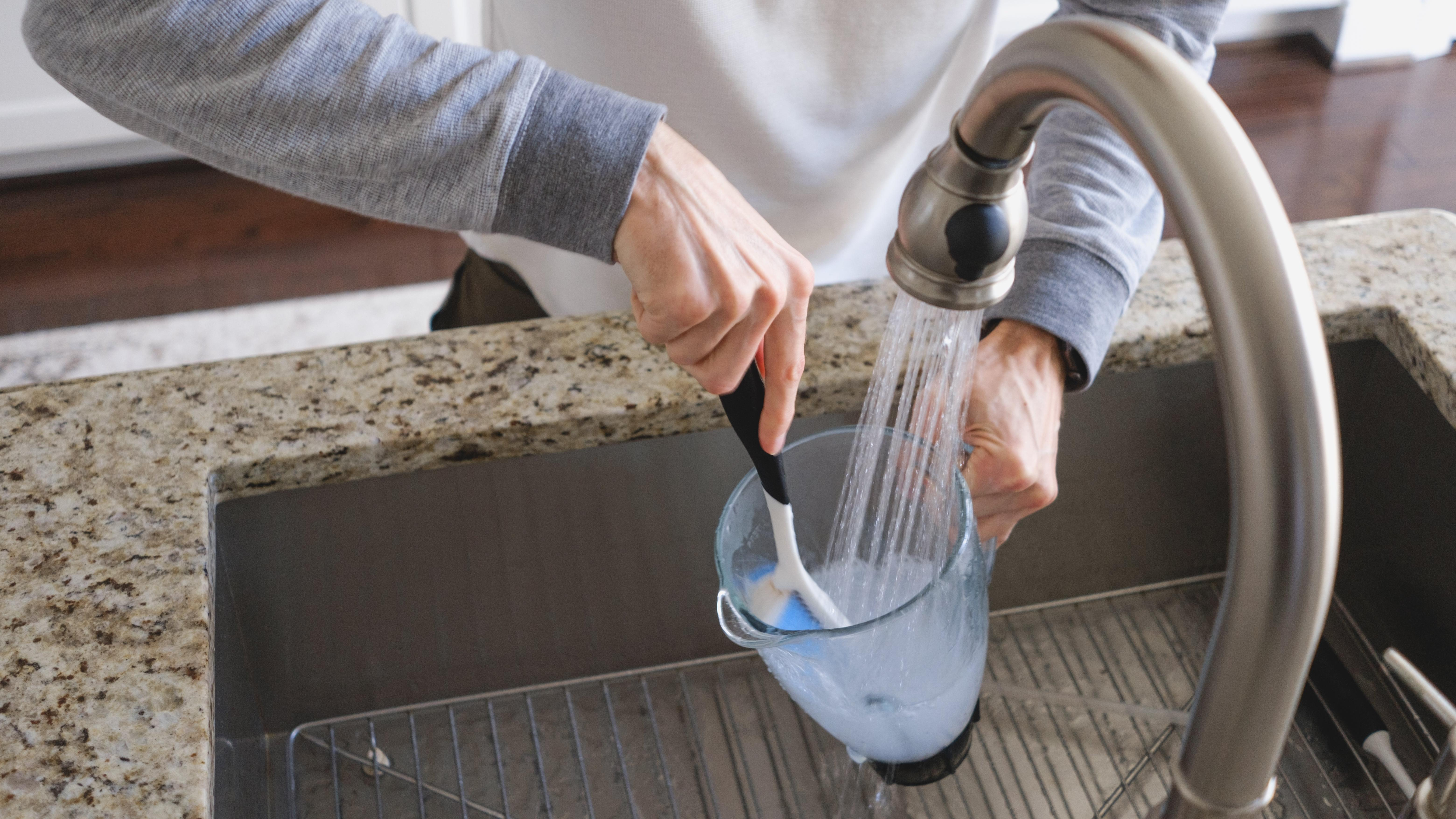How To Avoid Grisly Injuries While Cleaning Your Blender
Save your fingers from any damage while keeping your favorite appliance squeaky clean.
My Foodi Ninja blender is one of the best birthday presents I've ever received. I use it almost every day. But cleaning that thing is essentially a health hazard at this point.
Unfortunately, I do not have a dishwasher I can toss the blender parts into, so hand washing is my only option. After some slices to my knuckles and fingertips while trying to get chunks of frozen strawberry off the blades, I figured I must be doing something wrong.
There's no way everyone out there who owns a blender is just casually walking away with sliced-up hands after each use. I know plenty of people who own blenders and have perfectly intact digits, so I did some digging.
I found out there are basically two main ways to clean your blender if you do not have a dishwasher in your place. Here are some tips to keep your appliance functioning in tip-top shape so it can continue blending everything except your hands.
The easiest way to clean your blender
The first way to clean your blender is very hands-off, which is great considering I went searching for solutions to keep my hands the hell away from this thing in the first place. This method also feels so obvious that I can't believe it didn't occur to me before.
To clean your blender without having to actually touch the blades, all you need is a few drops of dish soap and some warm water. Squirt a few drops into the blender and pour in warm water. Put the lid on and run the blender as you normally would for a few seconds. The usual function of the blender and its blades will whip the soapy water around enough to clean all the spots where bits of food tend to stick. Then, just pour out the soapy water and rinse away whatever else is left behind.
The only downside to this method is that if you have a really stubborn pieces of stuck-on food, they probably won't come off using this technique. I'd say this method is good for an everyday quick clean, but for a deeper clean you'll want to try something else. (Pro tip: the sooner you clean your blender after using it, the less likely it is that bits of food will dry out and get stuck in there.)
How to thoroughly clean your blender blades
This cleaning technique is trickier, and its effectiveness depends on the type of blender you own. For example, my blender allows me to remove the blades to clean the cup, lid, and other parts separately, if needed. Other blender models might feature blades that are attached to the food cup, which makes cleaning a little more difficult.
If your blender is like mine and allows you to detach the blades from the other parts, the best way to clean the blades is one in which you'll need to keep hand safety a priority. Wear some dish gloves and use a long-handled scrub brush instead of a sponge to get some distance between your fingers and the blade. A brush will help you get into the little crevices where food might get stuck without endangering your fingers. (As an added precaution, you can wear cut resistant gloves instead of regular dish gloves.)
If your blender has the blades attached to the pitcher, you're in a tougher spot. You could submerge the pitcher with the blades in water and soap or cleaning solution, but make sure to check the manufacturer instructions before you try that. (I've warned you—don't blame me if you ruin your blender with that method!) Otherwise, your best bet is to rinse the pitcher as thoroughly as you can with hot water to get food bits loose and then carefully wipe the insides while wearing gloves and using a brush as previously described.
If you didn't just throw it out like most of us do, be sure to consult the manual that came with your blender. It may seem boring or unnecessary at first, but who better to tell you about how to safely clean your blender than the company that made it?
May your hands stay safe and your blenders shiny and clean.
